Characterization and Performance Evaluation of Liquid Biodegradable Mulch Films and Its Effects on Peanut Cultivation
Abstract
1. Introduction
2. Materials and Methods
2.1. Experimental Site
2.2. Field Experimental Design and Treatments
2.3. Preparation and Characterization of LBDMs Mulching Films
2.3.1. Preparation of LBDMs
2.3.2. Characterization of LBDMs
2.3.3. LBDMs Wettability
2.3.4. LBDMs Degradation
2.4. Determination of Soil Temperature and Moisture
2.5. Peanut Growth and Developmental Progress and Yield
2.5.1. Seedling Emergence
2.5.2. Growth Parameters of Peanuts
2.5.3. Determination of Peanut Pod Traits
2.5.4. Peanut Yield
2.6. Statistical Analyses
3. Results and Discussion
3.1. Weather Conditions
3.2. LBDMs Surface Morphologies, Wettability, and Degradability
3.2.1. LBDMs Surface Morphologies
3.2.2. Wettability Analysis of LBDMs
3.2.3. Degradation Performance of LBDMs
3.3. Soil Temperature and Moisture
3.4. Effects of mulching films on Peanut Seedling Emergence
3.5. Effects of Mulching Films on Peanut Growth Parameters
3.6. Effects of Mulching Films on Peanut Pod Traits
3.7. Effects of Mulching Films on Peanut Yield
4. Conclusions
Author Contributions
Funding
Institutional Review Board Statement
Data Availability Statement
Conflicts of Interest
References
- Li, H.D.; Li, W.J.; Kang, T.; Zhang, L.M.; Chen, J.S.; Zhang, Y.Y.; Ma, W.Y. Effects of different harvest time on yield and its components of peanut under plastic film mulching and open field cultivation. J. Peanut Sci. 2021, 50, 75–79. [Google Scholar]
- Sun, Z.H.; Ning, R.X.; Qin, M.H.; Liang, J.; Jiang, J.X.; Sun, W.; Liu, X.; Zi, M. Sustainable and hydrophobic polysaccharide-based mulch film with thermally stable and ultraviolet resistance performance. Carbohydr. Polym. 2022, 295, 119865. [Google Scholar] [CrossRef] [PubMed]
- Ramakrishna, A.; Hoang, M.T.; Suhas, P.W.; Tranh, D.L. Effect of mulch on soil temperature, moisture, weed infestation and yield of groundnut in northern Vietnam. Field Crops Res. 2006, 95, 115–125. [Google Scholar] [CrossRef]
- Li, X.L.; Zheng, G.F.; Li, Z.Y.; Fu, P. Formulation, performance and environmental/agricultural benefit analysis of biomass-based biodegradable mulch films: A review. Eur. Polym. J. 2024, 203, 112663. [Google Scholar] [CrossRef]
- Yang, M.; Yan, L.; Li, Y.C.; Huang, P.; Han, W.J.; Dang, X.G. An environment-friendly leather waste-based liquid film mulching and its application for facilitating the growth of maize crops. Process Saf. Environ. Prot. 2022, 159, 1236–1244. [Google Scholar] [CrossRef]
- Moreno, M.M.; Moreno, A. Effect of different biodegradable and polyethylene mulches on soil properties and production in a tomato crop. Sci. Hortic. 2008, 116, 256–263. [Google Scholar] [CrossRef]
- Tian, D.; Zhang, J.; Hu, J.G.; Huang, M.; Zhao, L.; Lei, Y.J.; Zou, J.M.; Zhang, S.B.; Shen, F. A new water-soluble lignin incorporation enhanced the barrier performance of liquid mulching film. Chem. Eng. J. 2023, 452, 139383. [Google Scholar] [CrossRef]
- Kumar, M.K.; Sheela, M.A. Effect of plastic film mulching on the distribution of plastic residues in agricultural fields. Chemosphere 2021, 273, 128590. [Google Scholar] [CrossRef]
- Wang, K. Study on the effects of agricultural residual film on soil physicochemical properties and crop yield. Mod. Agric. Res. 2021, 27, 27–28. [Google Scholar]
- Qin, J.; Song, L.; Li, X.; Wu, X.Y.; Zhao, B. Effects of liquid mulching film on plant community characteristics and soil water use efficiency in degraded land. Soil Water Conserv. China 2022, 8, 21–24+17. [Google Scholar]
- Yin, G.H.; Tong, N.; Hao, L.; Gu, J.; Liu, Z.X. Effects of soil moisture and yield under different material film mulching on peanut. J. Soil Water Conserv. 2012, 26, 204–207+250. [Google Scholar]
- Mei, L.; Dong, W.Y.; Zhou, J.H.; Liu, Q.; Song, H.X.; Wang, J.Y. Performance of biodegradable films and their application on fresh corn and sweet potato production in Beijing. J. China Agric. Univ. 2021, 26, 54–65. [Google Scholar]
- Li, C.; Moore-Kucera, J.; Lee, J.; Corbin, A.; Brodhagen, M.; Miles, C.; Inglis, D. Effects of biodegradable mulch on soil quality. Appl. Soil Ecol. 2014, 79, 59–69. [Google Scholar] [CrossRef]
- Kyrikou, I.; Briassoulis, D. Biodegradation of agricultural plastic films: A critical review. J. Polym. Environ. 2007, 15, 125–150. [Google Scholar] [CrossRef]
- Yang, X.J.; Li, L.; Zhao, W.Y.; Li, X.; Mu, Y.S.; Chen, M.H.; Wu, X.Q. Substitute for polyethylene (PE) films: A novel cow dung-based liquid mulch on silage cornfields. PLoS ONE 2022, 17, e0271273. [Google Scholar] [CrossRef] [PubMed]
- Chen, L.W. Fabrication and Application of One Biodegradable Starch-Based Liquid Mulching Materials. Master’s Thesis, Sichuan University, Chengdu, China, 2021. [Google Scholar]
- Zhang, J. Lignin-Reinforced Functionality of Biomass-Based Liquid Mulching Film. Master’s Thesis, Sichuan Agricultural University, Chengdu, China, 2023. [Google Scholar]
- Xu, Y.; Li, Q.; Man, L. Bamboo-derived carboxymethyl cellulose for liquid film as renewable and biodegradable agriculture mulching. Int. J. Biol. Macromol. 2021, 192, 611–617. [Google Scholar] [CrossRef]
- Harada, J.; Souza, A.G.; Macedo, J.R.N. Soil culture: Influence of different natural fillers incorporated in biodegradable mulching film. J. Mol. Liq. 2019, 273, 33–36. [Google Scholar] [CrossRef]
- Ning, R.X.; Liu, C.J.; Cheng, X.C.; Lei, F.H.; Zhang, F.L.; Xu, W.; Zhu, L.W.; Jiang, J.X. Fabrication of multi-functional biodegradable liquid mulch utilizing xyloglucan derived from tamarind waste for agricultural application. Int. J. Biol. Macromol. 2024, 257, 128627. [Google Scholar] [CrossRef]
- Bao, H.H.; Cao, L.K.; Wei, C.H. Field characteristics of potato pulp based multifunctional and biodegradable liquid mulching film. Acad. Period. Farm Prod. Process. 2014, 16, 1–3. [Google Scholar]
- Song, L.; Qin, J.; Li, X.; Wu, X.Y. Effects of liquid mulching film on agronomic traits, yield of peanut and soil fertility. Chin. Agric. Sci. Bull. 2023, 39, 33–37. [Google Scholar]
- Liu, X.G.; Fan, Y.; Zhao, X.F.; Chen, Z.; Miao, B.Y.; Chen, S.P. Effects of different film mulching treatments on physiological traits and yield of peanut in Tangshan area. J. Peanut Sci. 2021, 50, 80–84. [Google Scholar]
- Gao, X.; Fu, C.X.; Li, M.X.; Qi, X.J.; Jia, X. Effects of biodegradation of corn-starch–sodium-alginate-based liquid mulch film on soil microbial functions. Int. J. Environ. Res. Public Health 2022, 19, 8631. [Google Scholar] [CrossRef] [PubMed]
- Li, M.N.; Cheng, T.; Sun, C.K.; Gao, H.Y.; Yan, Y.J.; Yang, Y.Q. Research prospect of environmentally friendly liquid mulch film prepared by biomass materials. Henan Chem. Ind. 2024, 41, 33–38. [Google Scholar]
- Zainul, A.N.A.; Zulkifli, A.; Gunaseelan, S.; Palanivelu, S.D.; Salleh, K.M.; Che Othman, M.H.; Zakaria, S. Regenerated cellulose products for agricultural and their potential: A review. Polymers 2021, 13, 3586. [Google Scholar] [CrossRef] [PubMed]
- Chiara, M.M.; Luigi, B.; Paolo, F.M.L.; Antonino, D.F.; Marco, C. Film Blowing of biodegradable polymer nanocomposites for agricultural applications. Macromol. Mater. Eng. 2021, 306, 2100177. [Google Scholar]
- Zheng, Y.; Zheng, Y.; Wu, Z.; Sun, X.; Wang, C. Study on physiological characteristics and supporting techniques of Huayu 22 peanut. Asian Agric. Res. 2015, 7, 74–82. [Google Scholar]
- Santos, M.; Carlo, D.O.; Hong, J.; Liu, Z.; Jiang, S.; Hrapovic, S.; Lam, E.; Jin, T.; Moores, A. Effect of surface functionality on the rheological and self-assembly properties of chitin and chitosan nanocrystals and use in biopolymer films. Biomacromolecules 2023, 24, 4180–4189. [Google Scholar] [CrossRef]
- Huang, Z.; Wang, Y.; Zhang, N.; Zhang, L.; Darensbourg, D.J. One-Pot Synthesis of ion-containing CO2-based polycarbonates using protic ionic liquids as chain transfer agents. Macromolecules 2018, 51, 9122–9130. [Google Scholar] [CrossRef]
- Lin, Z.; Cheng, H.; He, K.; McClements, D.J.; Jin, Z.; Xu, Z.; Meng, M.; Peng, X.; Chen, L. Recent progress in the hydrophobic modification of starch-based films. Food Hydrocoll. 2024, 151, 109860. [Google Scholar] [CrossRef]
- AlSaleem, S.S.; Zahid, W.M.; Alnashef, I.M.; Haider, H. Extraction of halogenated hydrocarbons using hydrophobic ionic liquids. Sep. Purif. Technol. 2017, 184, 231–239. [Google Scholar] [CrossRef]
- Marczak, J.; Kargol, M.; Psarski, M.; Celichowski, G. Modification of epoxy resin, silicon and glass surfaces with alkyl- or fluoroalkylsilanes for hydrophobic properties. Appl. Surf. Sci. 2016, 380, 91–100. [Google Scholar] [CrossRef]
- Deng, Z.A.; Wu, M.; Shen, C.; Yang, X.; Wang, D.; Li, J.; Wu, D.; Chen, K. Microfluidic-blow-spinning of carvacrol-loaded porphyrin metal-organic framework nanofiber films with synergistic antibacterial capabilities for food packaging. Food Chem. 2024, 460, 140707. [Google Scholar] [CrossRef]
- Sun, Z.H.; Chen, F.S. Hydrophilicity and antifouling property of membrane materials from cellulose acetate/polyethersulfone in DMAc. Int. J. Biol. Macromol. 2016, 91, 143–150. [Google Scholar] [CrossRef]
- Crouvisier-Urion, K.; Lagorce-Tachon, A.; Lauquin, C.; Winckler, P.; Tongdeesoontorn, W.; Domenek, S.; Debeaufort, F.; Karbowiak, T. Impact of the homogenization process on the structure and antioxidant properties of chitosan-lignin composite films. Food Chem. 2017, 236, 120–126. [Google Scholar] [CrossRef] [PubMed]
- Yu, H.X.; Guo, W.L.; Le, Z.P. A study on preparation and performance of yam residues biodegradable liquid mulching film. Acta Agric. Univ. Jiangxiensis 2017, 39, 581–586. [Google Scholar]
- Steel, R.G.D.; Torrie, J.H. Principles and Procedures of Statistics: A Biometrical Approach, 2nd ed.; McGraw-Hill: New York, NY, USA, 1980. [Google Scholar]
- Yadav, N.; Hakkarainen, M. Degradable or not? Cellulose acetate as a model for complicated interplay between structure, environment and degradation. Chemosphere 2021, 265, 128731. [Google Scholar] [CrossRef] [PubMed]
- Wen, P.; Wu, Z.S.; Han, Y.J.; Cravotto, G.; Wang, J.; Ye, B.C. Microwave assisted synthesis of a novel biochar based slow release nitrogen fertilizer with enhanced water retention capacity. ACS Sustain. Chem. Eng. 2017, 5, 7374–7382. [Google Scholar] [CrossRef]
- Deshmukh, R.A.; Aloui, H.; Khomlaem, C.; Negi, A.; Yun, J.H.; Kim, H.S.; Kim, B.S. Biodegradable films based on chitosan and defatted Chlorella biomass: Functional and physical characterization. Food Chem. 2021, 337, 127777. [Google Scholar] [CrossRef]
- Sun, T.; Zhang, Z.; Ning, T.; Mi, Q.; Liu, Z. Colored polyethylene film mulches on weed control, soil conditions and peanut yield. Plant Soil Environ. 2015, 61, 79–85. [Google Scholar] [CrossRef]
- Sartore, L.; Vox, G.; Schettini, E. Preparation and performance of novel biodegradable polymeric materials based on hydrolyzed proteins for agricultural application. J. Polym. Environ. 2013, 21, 718–725. [Google Scholar] [CrossRef]
- Brault, D.; Stewart, K.A.; Jenni, S. Growth, development, and yield of head lettuce cultivated on paper and polyethylene mulch. HortScience 2002, 37, 92–94. [Google Scholar] [CrossRef]
- Zhao, H.; Xiong, Y.C.; Li, F.M.; Wang, R.Y.; Qiang, S.C.; Yao, T.F.; Mo, F. Plastic film mulch for half growing-season maximized WUE and yield of potato via moisture-temperature improvement in a semi-arid agroecosystem. Agric. Water Manag. 2012, 104, 68–78. [Google Scholar] [CrossRef]
- Mulumba, L.N.; Lal, R. Mulching effects on selected soil physical properties. Soil Tillage Res. 2008, 98, 106–111. [Google Scholar] [CrossRef]
- Anikwe, M.A.N.; Mbah, C.N.; Ezeaku, P.I.; Onyia, V.N. Tillage and plastic mulch effect on soil properties and growth and yield of cocoyam (Colocasia esculenta) on an ultisol in southeastern Nigeria. Soil Tillage Res. 2007, 93, 264–272. [Google Scholar] [CrossRef]
- Chen, J.K.; Zhang, Y.; Chen, J.S.; Chen, F.; Zhang, H.L. Characteristics of soil temperature and its response to air temperature under different tillage systems characteristics of soil temperature and thermal properties. Sci. Agric. Sin. 2009, 42, 2747–2753. [Google Scholar]
- Zhou, L.M.; Li, F.M.; Jin, S.L.; Song, Y.J. How two ridges and the furrow mulched with plastic film affect soil water, soil temperature and yield of maize on the semiarid Loess Plateau of China. Field Crops Res. 2009, 113, 41–47. [Google Scholar] [CrossRef]
- Wang, F.X.; Feng, S.Y.; Hou, X.Y.; Kang, S.Z.; Han, J.J. Potato growth with and without plastic mulch in two typical regions of Northern China. Field Crop Res. 2009, 110, 123–129. [Google Scholar] [CrossRef]
- Waterer, D. Evaluation of biodegradable mulches for production of warm season vegetable crops. Can. J. Plant Sci. 2010, 90, 737–743. [Google Scholar] [CrossRef]
- Zhang, W.F.; Wu, H.F.; Wang, R.J.; Liu, Y.F.; Zheng, L. Effects of different tillage and plastic film mulching practices on physiological characteristics, yield and quality of peanut. J. Peanut Sci. 2024, 53, 1002–4093. [Google Scholar]
- Ghosh, P.K.; Dayal, D.; Bandyopadhyay, K.; Mohanty, M. Evaluation of straw and polythene mulch for enhancing productivity of irrigated summer groundnut. Field Crops Res. 2006, 99, 76–86. [Google Scholar] [CrossRef]
- Zhu, G.D.; Xia, N.N.; Xue, M.; Li, Z.P.; Zhao, H.P.; Qu, C. Effects of colored polyethylene film mulch on pest populations, plant growth and yield of peanut in Northern China. J. Asia-Pac. Entomol. 2022, 25, 101944. [Google Scholar] [CrossRef]
- Kunzova, E.; Hejcman, M. Yield development of winter wheat over 50 years of FYM, N, P and K fertilizer application on black earth soil in the Czech Republic. Field Crops Res. 2009, 111, 226–234. [Google Scholar] [CrossRef]

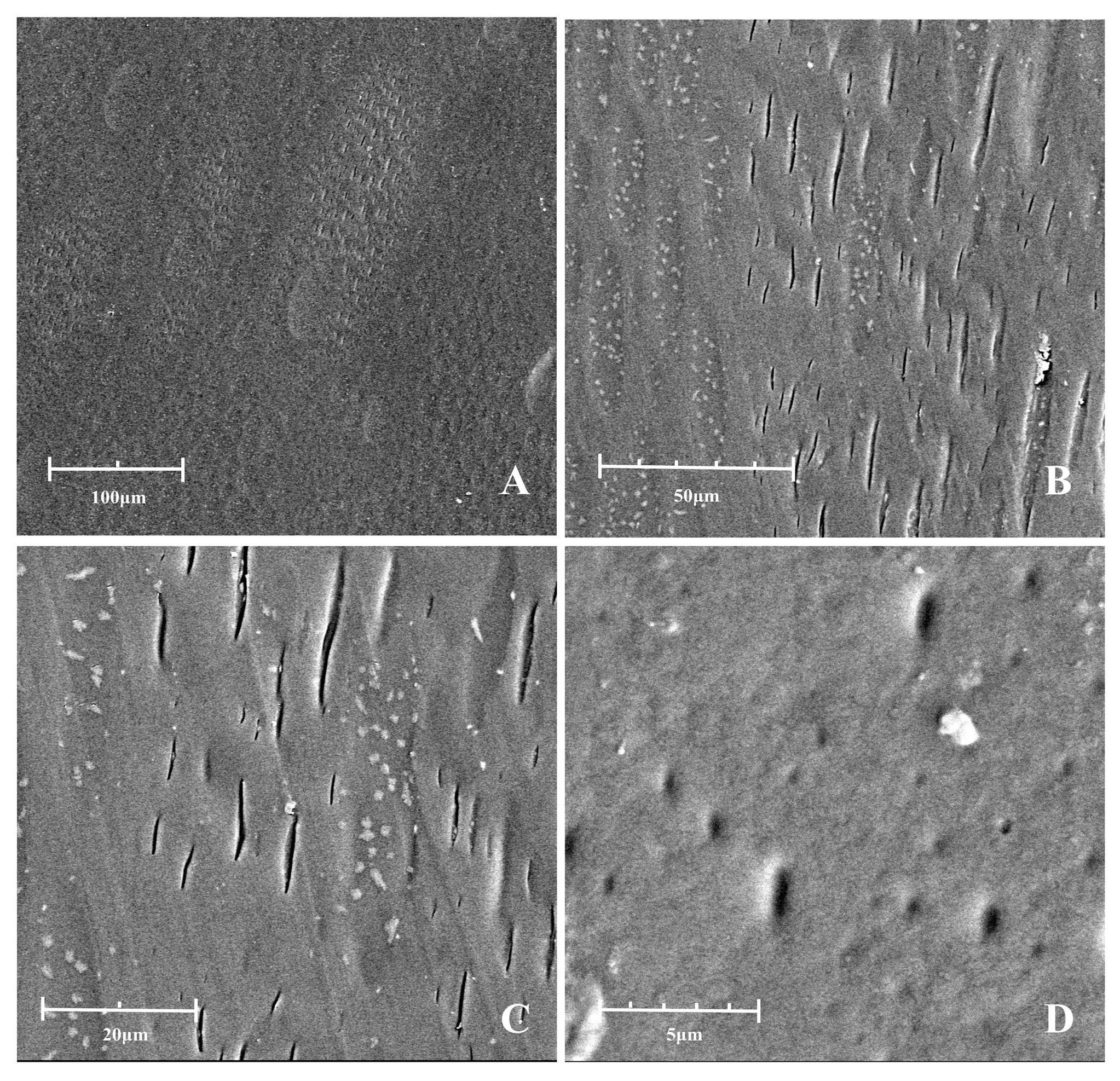
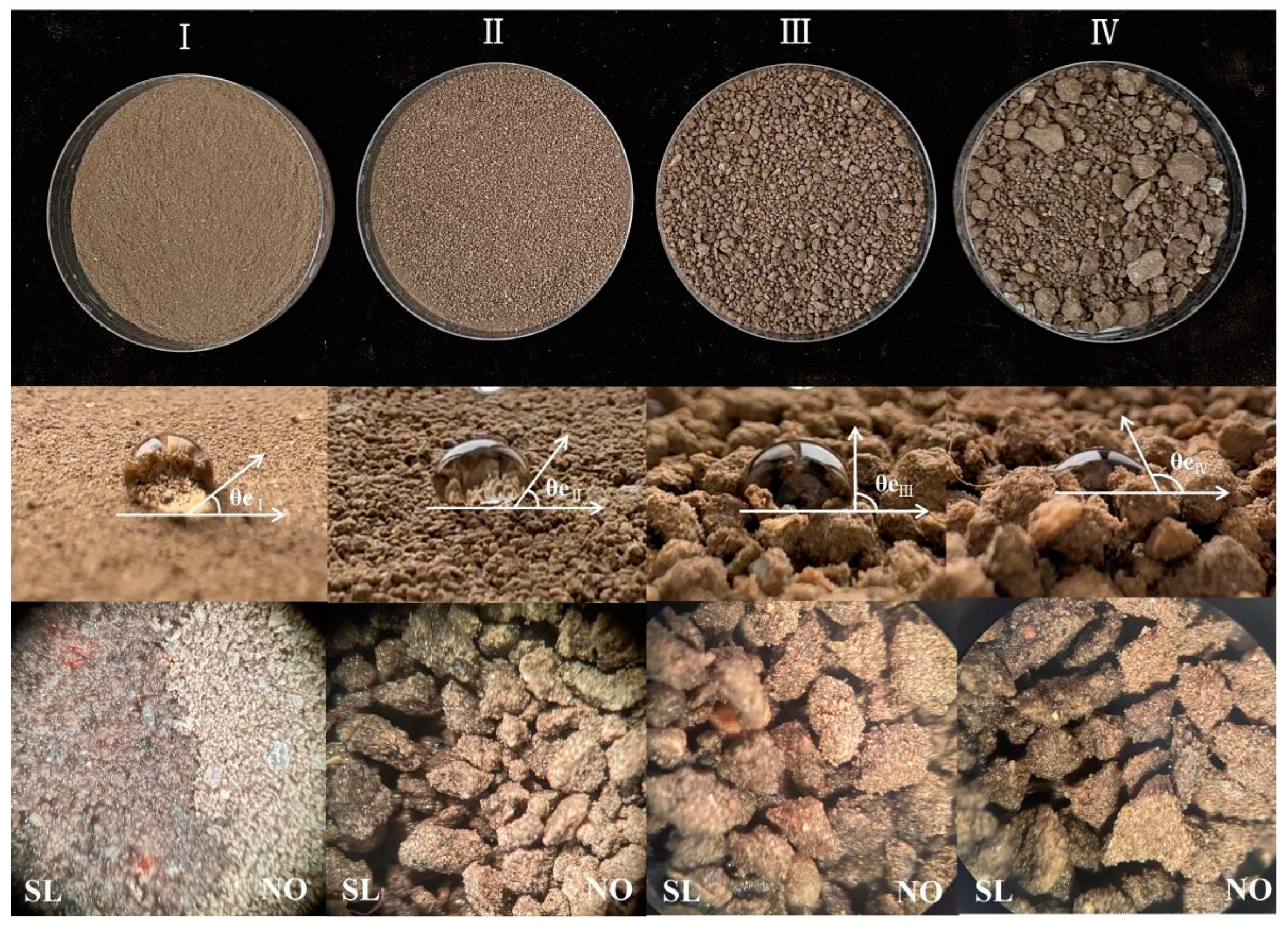


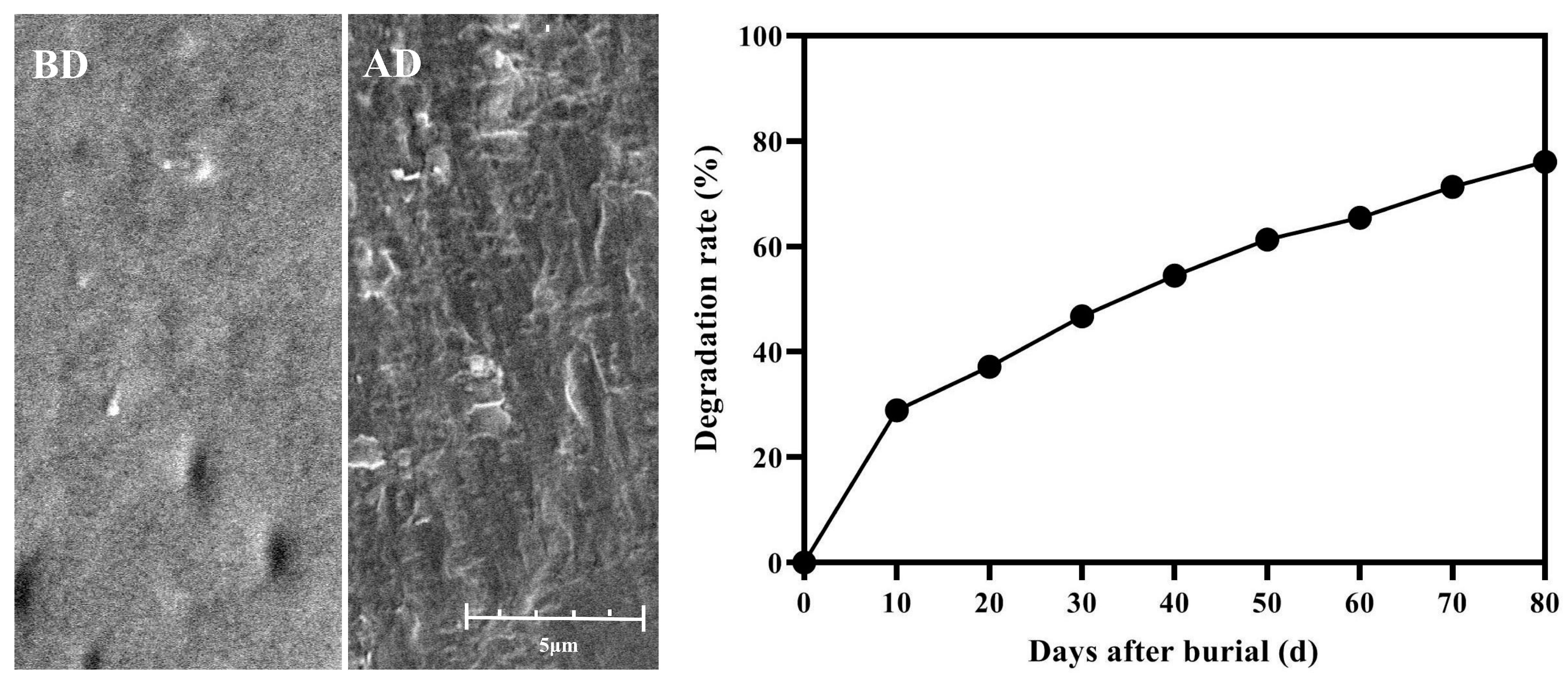

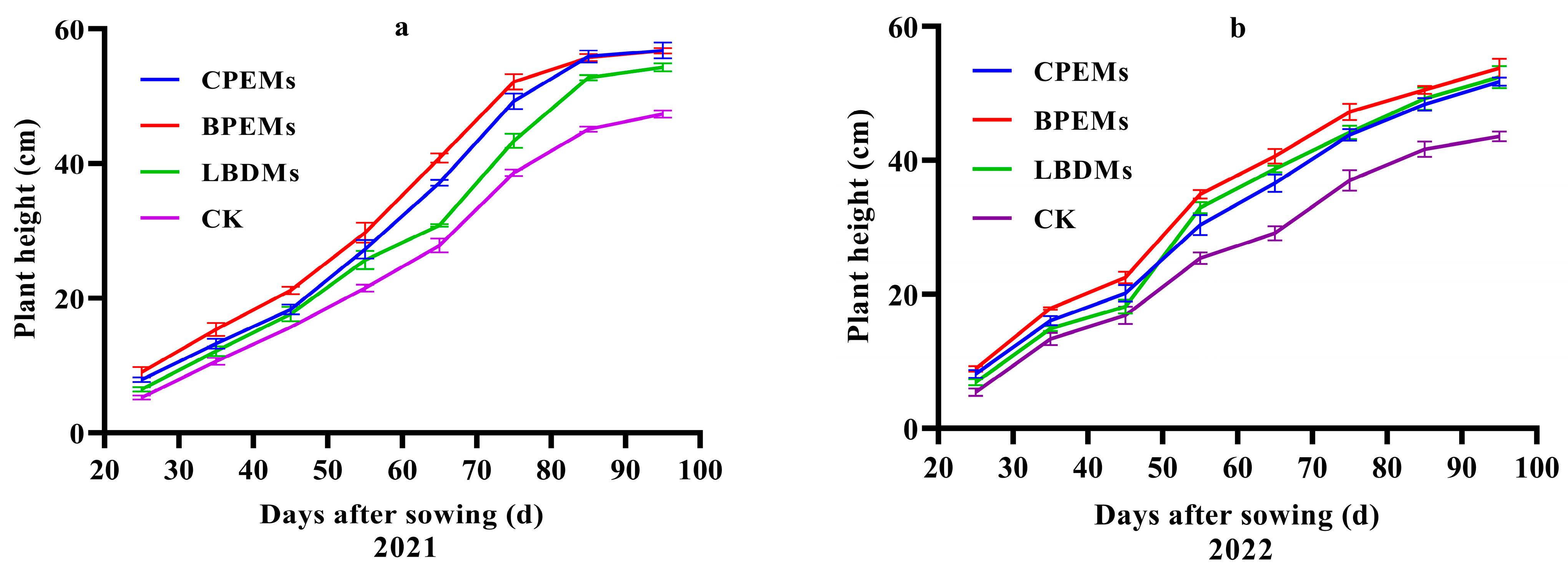
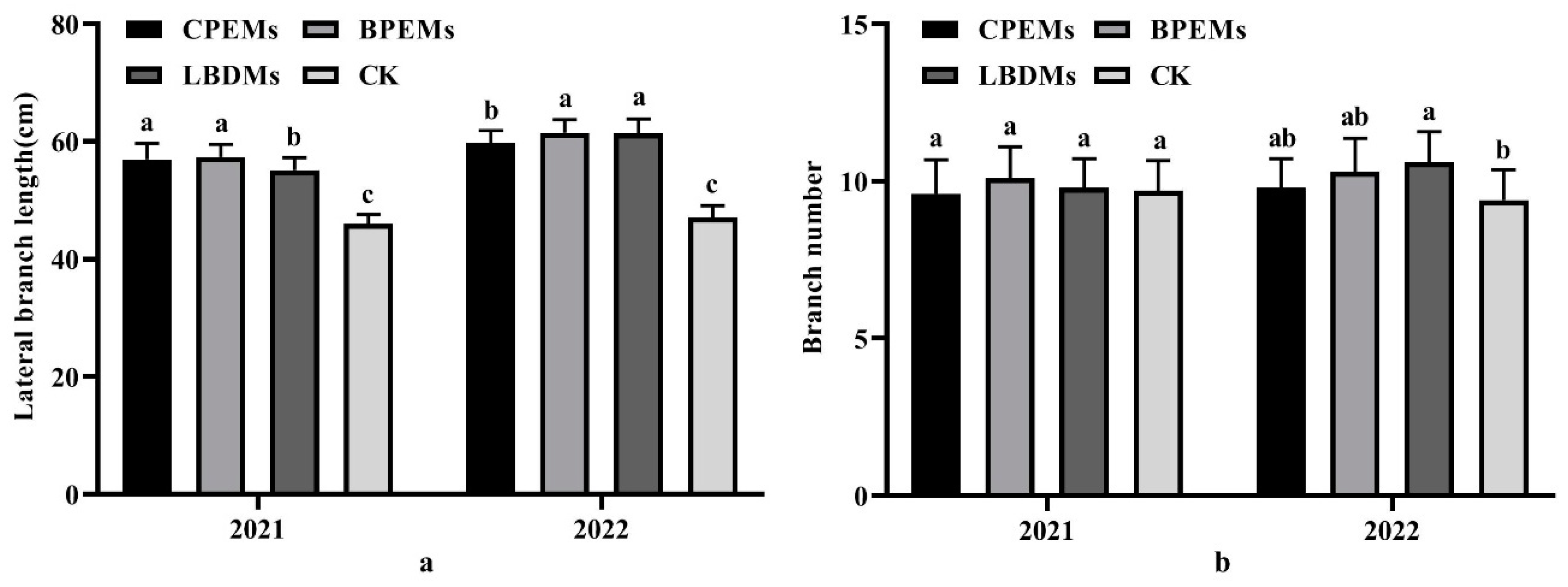
| Year | 2021 | 2022 | ||||
|---|---|---|---|---|---|---|
| Treatments | Seedling Stage | Emergence Rate (%) | Seedling Stage | Emergence Rate (%) | ||
| Date | DAS | Date | DAS | |||
| CPEMs | 15 May | 12 | 87.66 ± 3.52 b | 19 May | 11 | 89.52 ± 3.29 a |
| BPEMs | 15 May | 12 | 91.35 ± 2.66 a | 18 May | 10 | 92.17 ± 4.29 a |
| LBDMs | 19 May | 16 | 82.59 ± 2.28 c | 23 May | 15 | 81.08 ± 3.10 b |
| CK | 25 May | 22 | 65.71 ± 2.36 d | 27 May | 19 | 66.15 ± 3.69 c |
| Full Pod Rate (%) | Immature Pod Rate (%) | Kernel Rate (%) | Single Kernel Rate (%) | Double Kernel Rate (%) | Germinated Kernel Rate (%) | |
|---|---|---|---|---|---|---|
| Year | 2021 | |||||
| CPEMs | 72.31 ± 0.96 b | 25.24 ± 1.18 b | 74.02 ± 1.42 ab | 21.27 ± 1.40 a | 77.59 ± 1.85 a | 6.96 ± 0.92 b |
| BPEMs | 76.66 ± 1.75 a | 21.06 ± 0.92 c | 75.37 ± 0.86 a | 20.87 ± 0.83 a | 78.29 ± 0.97 a | 10.88 ± 1.30 a |
| LBDMs | 72.73 ± 1.13 b | 24.97 ± 0.64 b | 73.40 ± 1.00 b | 21.37 ± 0.89 a | 77.06 ± 1.38 a | 4.02 ± 0.58 c |
| CK | 66.69 ± 1.37 c | 30.57 ± 1.59 a | 73.32 ± 1.06 b | 21.68 ± 1.22 a | 77.74 ± 1.25 a | 1.18 ± 0.62 d |
| Year | 2022 | |||||
| CPEMs | 66.02 ± 2.23 bc | 31.13 ± 2.65 ab | 81.32 ± 1.54 a | 24.91 ± 1.72 a | 72.99 ± 1.82 a | 3.59 ± 0.28 ab |
| BPEMs | 73.41 ± 3.36 a | 25.11 ± 2.68 b | 80.59 ± 4.67 a | 20.98 ± 4.18 a | 74.48 ± 4.74 a | 8.38 ± 2.63 a |
| LBDMs | 67.67 ± 2.58 b | 29.37 ± 3.91 ab | 83.09 ± 7.86 a | 22.61 ± 1.01 a | 75.93 ± 0.29 a | 0.74 ± 0.82 c |
| CK | 60.44 ± 3.20 c | 36.52 ± 4.23 a | 70.21 ± 2.76 b | 26.34 ± 3.68 a | 71.59 ± 4.85 a | 1.25 ± 1.44 bc |
| Pod Yield (kg·ha−1) | Yield Increase Compared to CK (%) | Productivity per Plant (g) | 100-Pod Weight (g) | 100-Kernel Weight (g) | |
|---|---|---|---|---|---|
| Year | 2021 | ||||
| CPEMs | 4975.00 ± 131.05 ab | 10.19 | 18.43 ± 0.49 ab | 238.63 ± 5.47 ab | 97.24 ± 2.55 a |
| BPEMs | 5175.00 ± 119.06 a | 14.62 | 20.37 ± 0.97 a | 247.33 ± 2.25 a | 97.15 ± 1.82 a |
| LBDMs | 4895.00 ± 129.33 bc | 8.42 | 19.38 ± 1.04 a | 245.00 ± 1.80 a | 96.80 ± 1.04 a |
| CK | 4515.00 ± 83.52 c | - | 17.08 ± 0.96 b | 234.00 ± 5.00 b | 96.00 ± 0.98 a |
| Year | 2022 | ||||
| CPEMs | 4965.00 ± 70.53 b | 14.27 | 18.22 ± 1.07 b | 239.99 ± 2.54 bc | 89.10 ± 2.32 b |
| BPEMs | 5360.00 ± 106.42 a | 23.36 | 21.24 ± 0.41 a | 246.45 ± 3.65 a | 96.23 ± 3.29 a |
| LBDMs | 5225.00 ± 92.60 a | 20.25 | 20.67 ± 0.61 a | 242.08 ± 0.68 ab | 95.47 ± 1.14 a |
| CK | 4345.00 ± 102.10 c | - | 16.93 ± 0.60 b | 235.53 ± 1.60 c | 88.92 ± 4.20 b |
Disclaimer/Publisher’s Note: The statements, opinions and data contained in all publications are solely those of the individual author(s) and contributor(s) and not of MDPI and/or the editor(s). MDPI and/or the editor(s) disclaim responsibility for any injury to people or property resulting from any ideas, methods, instructions or products referred to in the content. |
© 2024 by the authors. Licensee MDPI, Basel, Switzerland. This article is an open access article distributed under the terms and conditions of the Creative Commons Attribution (CC BY) license (https://creativecommons.org/licenses/by/4.0/).
Share and Cite
Shi, J.; Wang, S.; Yang, Z.; Li, B.; Chen, R.; Bu, F.; Luan, B.; Liu, B.; Li, P. Characterization and Performance Evaluation of Liquid Biodegradable Mulch Films and Its Effects on Peanut Cultivation. Polymers 2024, 16, 2487. https://doi.org/10.3390/polym16172487
Shi J, Wang S, Yang Z, Li B, Chen R, Bu F, Luan B, Liu B, Li P. Characterization and Performance Evaluation of Liquid Biodegradable Mulch Films and Its Effects on Peanut Cultivation. Polymers. 2024; 16(17):2487. https://doi.org/10.3390/polym16172487
Chicago/Turabian StyleShi, Jie, Shaoli Wang, Zhongxue Yang, Baoyan Li, Ruijue Chen, Fanzhi Bu, Binghui Luan, Baoyou Liu, and Peiqiang Li. 2024. "Characterization and Performance Evaluation of Liquid Biodegradable Mulch Films and Its Effects on Peanut Cultivation" Polymers 16, no. 17: 2487. https://doi.org/10.3390/polym16172487
APA StyleShi, J., Wang, S., Yang, Z., Li, B., Chen, R., Bu, F., Luan, B., Liu, B., & Li, P. (2024). Characterization and Performance Evaluation of Liquid Biodegradable Mulch Films and Its Effects on Peanut Cultivation. Polymers, 16(17), 2487. https://doi.org/10.3390/polym16172487






